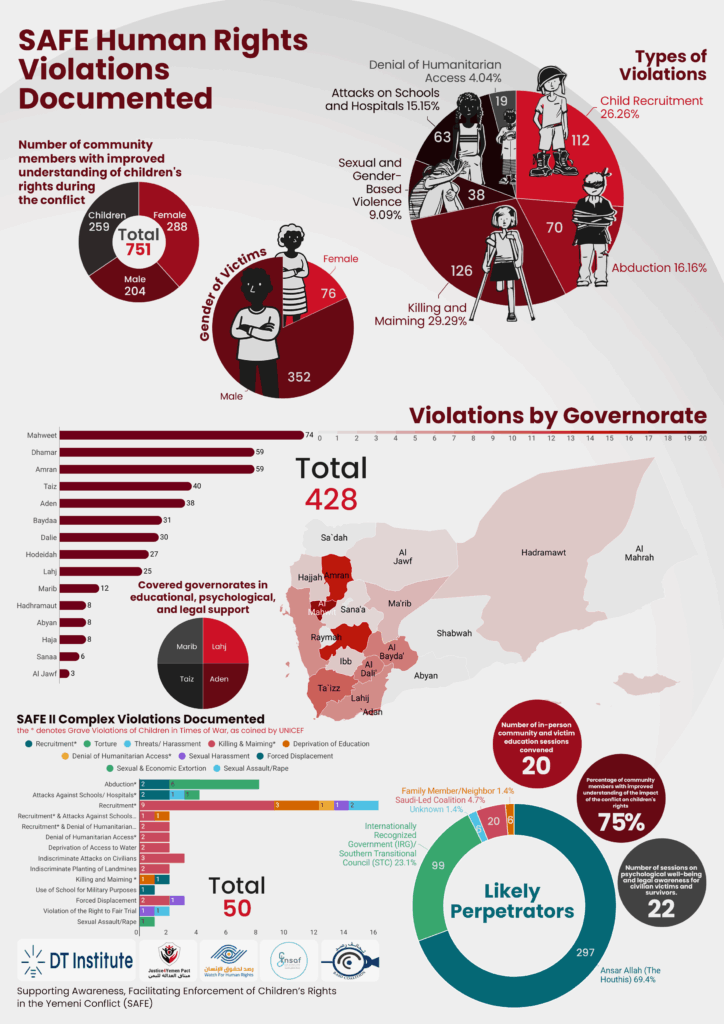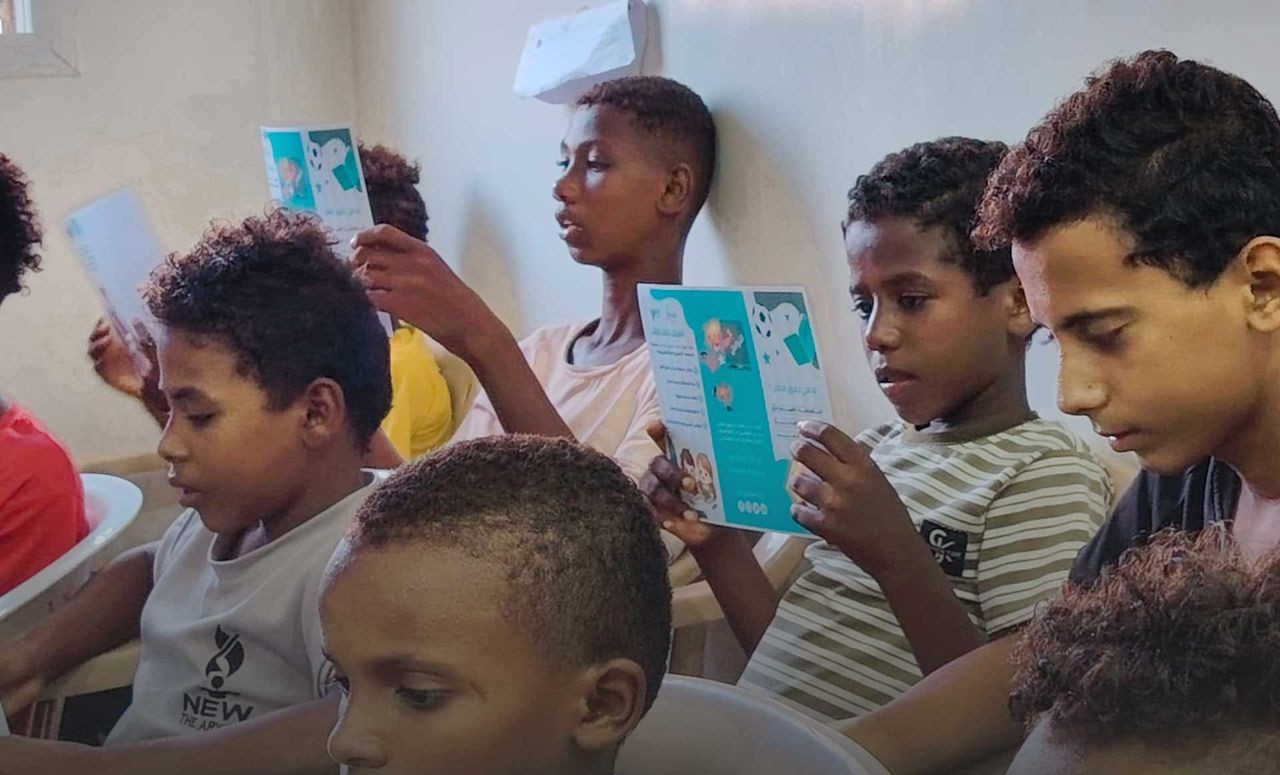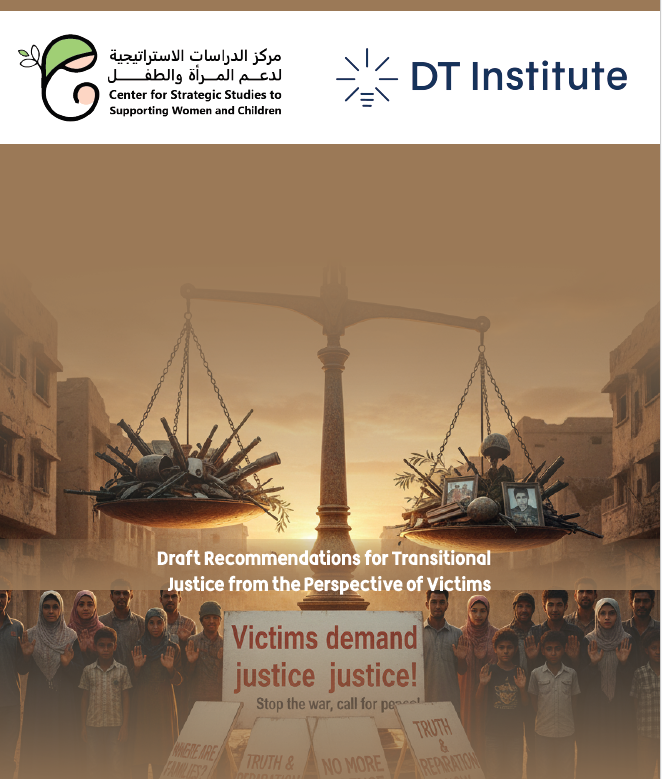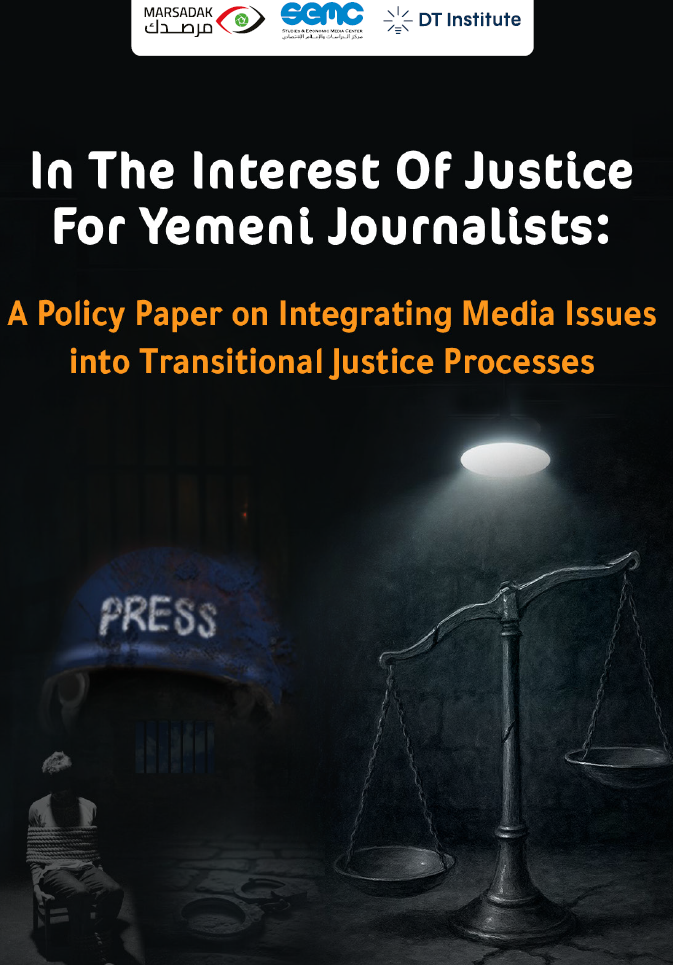While engaging in psychosocial sessions under the SAFE (Supporting Awareness, Facilitating Enforcement of Children’s Rights in the Yemeni Conflict) Project, 13-year-old Jennah1 shared her heartbreaking experience of assault while fetching water alone in one of Taiz’s displacement camps. Jennah, like millions of Yemeni children, has faced one or more of the six grave violations against children. The UN has identified six grave violations against children in armed conflict: killing and maiming, recruitment or use of children in armed forces or armed groups, sexual violence, abduction, attacks on schools and hospitals, and denial of humanitarian access to children.
Jennah’s story captures the human face of Yemeni children’s ongoing crisis. UN reports show that a child dies every 10 minutes in Yemen due to indirect causes like disease and malnutrition, compounded by violence spread across as many as 52 military frontlines. Children are extensively affected and often militarized, bearing the impact of the war at every level. The chaos and collapse of the rule of law have fueled a surge in the six grave violations, entrenching a pervasive culture of impunity. Jennah was one of millions of children denied justice; instead of being protected, she was even forced toward early marriage.
It is within this context that the SAFE Project was designed — to transform stories like Jennah’s from despair to justice. Over the past four years, DT Institute, in partnership with three local partners under SAFE – the Yemeni Coalition to Monitor Human Rights Violations (YCMHRV, also known as the Rasd Coalition), Watch for Human Rights (W4HR), and INSAF for Rights and Development – has implemented initiatives to address this growing crisis.
The initiative’s core mission is to shift the paradigm from mere documentation to structural change — turning evidence into policy, policy into accountability, and accountability into protection. The project works to institutionalize justice for children by advocating at both national and international levels and linking civil society monitoring data directly with fragile government and security mechanisms. Through this integrated model, the project continues to pioneer digital accountability and build lasting national capacity and political will for long-term protection and rehabilitation.
A Robust Recipe for Structural Change Towards Justice
The project, throughout its lifetime, has demonstrated a practical and effective application of the Integrated Multi-Track Strategy for addressing child violations and seeking justice. The approach combined high-level diplomacy, building on the Universal Periodic Review (UPR), with direct engagement with national government institutions through existing mechanisms. This engagement included strategic meetings with the Ministry of Justice (General Directorate of Women and Child Affairs), the Public Prosecutor’s Office (Chief of the Women and Child Rights Division), and ministerial technical committees, such as the Joint Technical Committee to Prevent Child Recruitment, to institutionalize justice and link civil society monitoring data to state action.
Building on this coordination, INSAF, in partnership with the Ministry of Justice and the Ministry of Human Rights, implemented an awareness and advocacy campaign targeting security and military authorities to promote legal compliance, prevent child recruitment, and foster a culture of respect for children’s rights
Simultaneously, the project created synergies between national institutions and local communities through nationwide awareness campaigns to combat disinformation and raise legal and psychological awareness, empowering community members to recognize and report children’s rights violations— a key tactic used by parties to the conflict to justify violations and obscure accountability. This was achieved by pioneering digital accountability using Open-Source Intelligence (OSINT), which became a model for rights-based counter-disinformation efforts in Yemen.
Long-Term Impact
“Children in Yemen are facing an unprecedented and unseen crisis of violations. Over 11 million children remain in need of protection and humanitarian assistance. To respond effectively, we adopted a multi-track methodology — combining documentation, advocacy, and institutional engagement — to ensure that protection leads to justice and lasting change,” said Feras Hamdouni, Senior Program Manager at DT Institute.
The project’s framework and strategic approach have laid the foundation for significant long-term achievements and opened pathways for future scaling. Through coordinated efforts between government institutions and civil society organizations (CSOs), along with mass advocacy, the project succeeded in:
Institutionalizing Government: CSO Linkages for Accountability and Protection
The project successfully established formal and sustained coordination mechanisms between civil society and key government bodies, such as the Ministry of Justice and the Public Prosecutor’s Office. These linkages ensure that civil society’s monitoring data on grave violations are directly connected to official state mechanisms. Building on previous successful meetings, the Rasd Coalition has strengthened coordination among government institutions and civil society organizations working on child protection in Yemen.
These meetings helped identify the main legal, administrative, and procedural challenges hindering effective child protection mechanisms and resulted in practical recommendations — including the establishment of a joint coordination mechanism, improved data-sharing among ministries, and proposed legislative reforms addressing child recruitment and sexual violence. The discussions also improved communication among the justice, defense, interior, and social affairs sectors, laying the groundwork for a unified national approach to children’s rights. The Rasd Coalition is now working closely with the Technical Committee to prepare for a national meeting in December 2025, which will focus on the legal and legislative challenges facing children in Yemen.
“We hope this will mark an encouraging step toward deeper cooperation with government bodies,” said Mutahir Albuthaigi, Director at the Rasd Coalition.
As a result, documentation from CSOs now feeds into actionable policy discussions and investigative processes — turning evidence into tangible accountability outcomes. This progress has also fostered a new sense of shared responsibility between state institutions and communities. “The project has established a more permanent presence for these policies… the project established the concept of mutual responsibility between the community and the state. It will open doors for future wide local initiatives that will benefit from this project,” shared Bassim al-Aghbari of INSAF for Rights and Development
Pioneering Digital Accountability and Counter-Disinformation
Led by the Rasd Coalition, the project developed a pioneering methodology to monitor and counter media defamation through OSINT. Through the initiative, entitled From Shrapnel to Disinformation, the Coalition published and publicly exposed 18 verified cases of media manipulation surrounding child rights violations — particularly by the Houthi group, which exploited images of child victims to deflect responsibility and fabricate enemy attacks. Using OSINT, the team systematically juxtaposed verified facts against fabricated narratives disseminated by Houthi-controlled media outlets.
These reports revealed the mechanics of a coordinated propaganda apparatus — one that routinely exploits images of child victims to deflect responsibility, silence survivors, and promote impunity. By unveiling these tactics, the project transformed digital forensics into tools for justice, establishing a new framework for digital accountability that preserves verified evidence for future mechanisms and strengthens Yemen’s national capacity to combat disinformation.
“The study of defamation, in my opinion, is one of a kind in Yemen and in the region because it shows the tactics that war propagandists use to recruit and to avoid accountability,” stated Albuthaigi.
Curbing the Culture of Shame
The project advanced nationwide efforts to document children’s rights violations and challenge the culture of shame that silences survivors and families. Drawing on insights from the I’m Afraid of Scandal report by W4HR under SAFE, it highlighted how social stigma and fear of reputation prevent reporting of abuses. Through awareness campaigns and community dialogues, the project fostered openness and collective responsibility, empowering communities to speak out to protect children.
Integrating Child Rights into the Security Sector
In collaboration with INSAF, the project introduced targeted advocacy and awareness initiatives within military and security institutions. Engagements with the military police forces included on-site sessions that emphasized the legal prohibition of child recruitment and reinforced child protection protocols. Building on this progress, INSAF plans to expand the campaign to include additional law enforcement institutions, including police stations, to further strengthen child protection awareness and preventive practices across the security sector. These efforts culminated in a public declaration of commitment from senior leadership:
“The leadership of the Military Police Forces… is fully committed to preventing the recruitment of any person under the age of 18. There are clear, accredited procedures in personnel affairs… The Military Police bear the responsibility for continuous oversight of units to guarantee compliance with this principle,” said Brigadier General Arif Al-Bussaisi, Military Police Command.
This milestone marks a critical institutional shift toward embedding child protection within the security apparatus.
Strengthening National Policy through International Mechanisms
Under the leadership of the Rasd Coalition, the project supported the government in following up on and implementing the UPR recommendations related to children’s rights. This collaboration fostered national dialogue and contributed to aligning project findings with ongoing governmental efforts to develop a national framework for implementing the UPR recommendations. It reinforced Yemen’s long-term commitment to human rights and ensured that child protection remains a central pillar in upcoming UPR reporting cycles.
Despite immense challenges, both implementing organizations faced significant difficulties in implementation, including extreme security conditions, administrative constraints, and limited access to accurate information in many conflict-affected areas. Nevertheless, through persistence, coordination, and adaptability, the project teams continued their work effectively and ensured that activities reached key beneficiaries and decision-makers, maintaining the project’s momentum even under difficult circumstances.
Advancing Psychosocial Support and Inclusion for Conflict-Affected Children
The project strengthened community resilience and child well-being by integrating psychosocial support and empowerment for children affected by conflict, with particular attention to marginalized and displaced groups such as the Muhamasheen and internally displaced persons (IDPs). Through coordinated efforts with local partners, these initiatives helped children and caregivers recover from trauma, rebuild confidence, and increase awareness of their rights. This inclusive approach not only addressed the psychological impacts of war but also promoted social cohesion and long-term community stability. Jennah was among the children who received psychological support from the project, and activists working on this project emphasized that this represents a unique and lasting impact. “I think we have paved the way for other organizations to build on what we have done in this project,” said Albuthaigi.
Project Reach and Level of Scalability
Throughout its implementation, the SAFE Project achieved measurable reach and tangible community-level outcomes. A total of 428 cases of child rights violations were documented, while 42 psychosocial support sessions were provided for affected children and families. In addition, 751 individuals — including 288 women, 204 men, and 259 children — participated in psychological support and awareness sessions on the six grave violations.

Building on these achievements, the SAFE Project model is highly adaptable and scalable to other governorates across Yemen, including Hadhramaut, Abyan, and Marib. The integrated multi-track approach — combining documentation, advocacy, digital accountability, and government engagement — can be tailored to local contexts through coordinated partnerships between civil society and government entities, ensuring sustainable impact and institutional ownership.
However, implementing in-person activities in Houthi-controlled areas presented significant security and access challenges. To overcome these barriers, the project leveraged remote outreach methods, such as radio and digital campaigns, which proved highly effective. For instance, radio broadcasts successfully reached an estimated 15 million people, demonstrating how remote interventions can complement in-person activities and ensure continuous engagement despite movement restrictions.
The Way Forward
Building on the trust and determination established between civil society and government actors, partners agreed on several next steps to sustain progress and deepen institutional ownership of child protection and accountability efforts.
The Project succeeded in establishing strong relationships between civil society and government institutions, resulting in a clear commitment from authorities to sustain and expand accountability and child protection efforts. The next step is to strengthen the institutional and legal capacities of key national entities — particularly the UPR Reporting Commission and the Technical Committee to Prevent Child Recruitment — to ensure the effective implementation of human rights commitments, improve reporting and coordination mechanisms, and embed sustainable child protection practices within Yemen’s justice and security sectors.
Building on these achievements, the project’s next phase aims to expand its impact through deeper community and institutional engagement. Partners have proposed initiatives to counter disinformation by working with community and religious leaders, local radio stations, and digital advocates to challenge stigmas and promote children’s rights, especially in Houthi-controlled areas. Additional priorities include developing a shadow report on the government’s implementation of child rights obligations, advancing UPR follow-up through joint progress reviews, and strengthening coordination mechanisms and technical committees. Planned efforts also focus on legal reform and the provision of direct legal aid and psychosocial support to affected children and families through specialized local partners.
Moving forward, the project will continue to amplify the voices of children like Jennah —transforming individual pain into national policy, and immediate protection into lasting justice.





